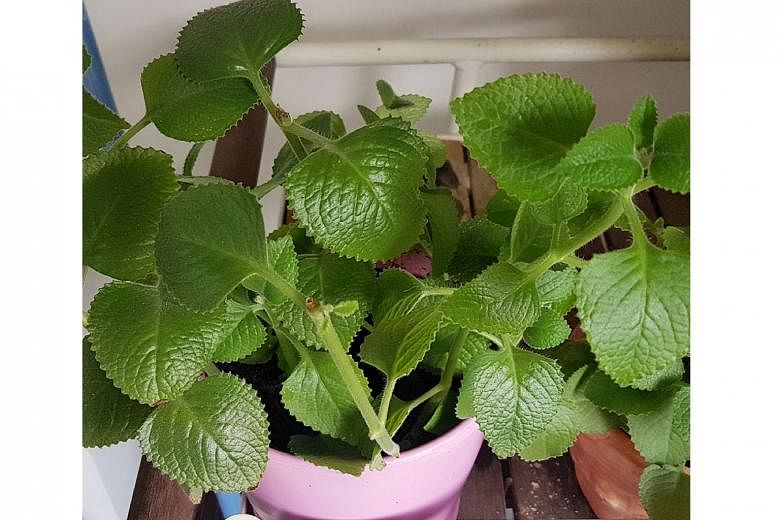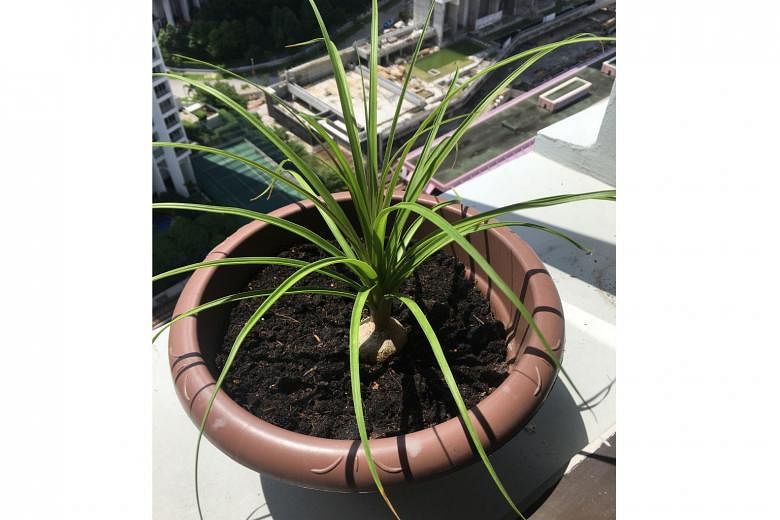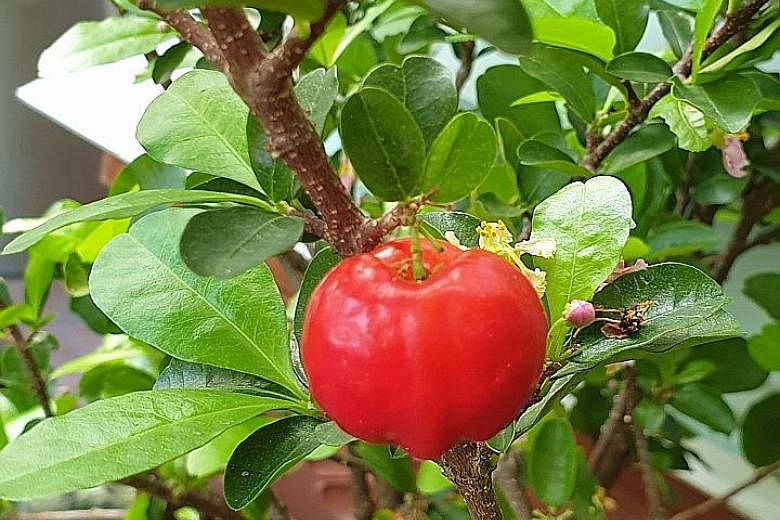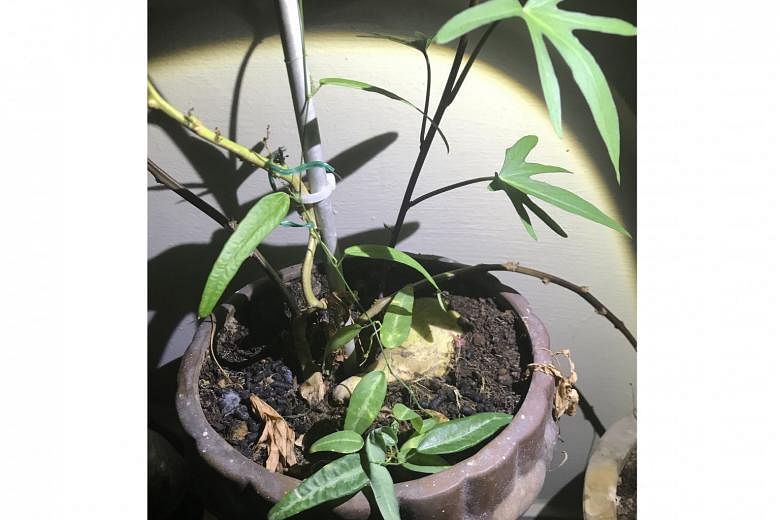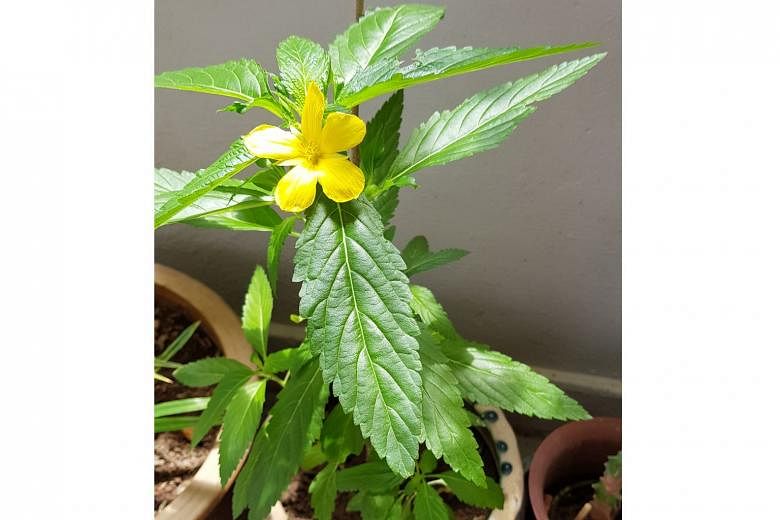Indian Borage commonly mistaken as mint
I got this plant from my neighbour, who uses it for cooking. Is it a mint plant?
Kathrine Ho
The plant is commonly called the Indian Borage. Its botanical name is Plectranthus amboinicus and it is a member of the mint family, Lamiaceae.
It is commonly mistaken for the common mint plant (botanical name: Mentha cultivar).
Cultivars with variegated leaves are available for sale at local nurseries. These can be used to add a pop of colour in the garden.
The plant is both a medicinal and culinary herb. It is sometimes used as a substitute for oregano and, locally, this plant is best known for its use to treat coughs - its leaves are picked, washed and boiled to give a decoction that is said to soothe the throat.
Ponytail Palm is not a true palm plant
What is the name of this plant and how do I take care of it?
Tuck Sum Leong
The plant is the Ponytail Palm and is also known as the Elephant-foot Tree. These common names are derived from the appearance of the plant.
Its botanical name is Beaucarnea recurvata and it is not a true palm species.
Note that this plant is a sun-loving one and needs to be grown under direct sunlight for at least six hours daily. It is also drought-tolerant and needs to be planted in a well-draining soil mix.
This plant grows slowly and the application of slow-release fertiliser pellets is usually sufficient to meet its nutritional needs.
Fruiting shrub is the Barbados Cherry
I bought this plant from a nursery stall. Is it called Brazil Cherry? Are the fruit edible?
Lee Heng Kee
The shrub is not the Brazilian Cherry. Its botanical name is Malpighia emarginata and common names include Barbados Cherry and Acerola Cherry.
The fruit of this plant are very attractive and edible. However, they taste tart even when ripe. They are reported to be high in ascorbic acid (vitamin C).
This plant grows best under direct sunlight and in well-drained soil. It can grow either as a small shrub or into a small tree.
Some gardeners fashion this plant into a bonsai, which can be highly ornamental when it is flowering and fruiting. It is also a suitable candidate for growing in containers.
Tuber-bearing plant is the sweet potato and neighbouring plant likely the Corkystem Passionflower
Is it possible to identify this plant based on the leaf and "fruit" that has grown out from the soil?
Wong Tai Sai
The flower pot has two plants growing in it.
The "fruit" is in fact a tuber and, from the type of leaves, the plant appears to be a sweet potato plant (botanical name: Ipomoea batatas).
Did you plant sweet potato stem-cuttings or bury a sweet potato tuber in this pot previously?
The smaller plant in the foreground with leaves that have silver markings is likely a young plant of the Corky Passionflower, also known as the Corkystem Passionflower. Its botanical name is Passiflora suberosa and it often grows as a weed in flower pots and planted beds in gardens.
The silver markings tend to disappear as the plant matures.
Yellow Turnera is grown mostly as an ornamental plant
What is the name of this plant? Some say it is a herb. Does it have medicinal properties?
Andrew Wong
The plant is known by a number of common names, including West Indian Holly, Yellow Alder and Yellow Turnera. Its botanical name is Turnera ulmifolia.
It grows as a shrub that tends to get leggy with time and is often considered a "clock plant", where its yellow flowers open only in the morning. They close and fade away by noon.
It is largely grown as an ornamental plant for its bright yellow flowers. It has reportedly been used to treat indigestion, bronchitis, cold, fever, boils and rheumatism.
When it comes to plants used in traditional medicine, it is advisable that you consult a qualified practitioner or doctor rather than self-medicate with plants.
• Answers by Dr Wilson Wong, an NParks-certified practising horticulturist and park manager. He is the founder of Green Culture Singapore and an adjunct assistant professor (Food Science & Technology) at the National University of Singapore.
• Have a gardening query? E-mail it with clear, high-resolution pictures of at least 1MB, if any, and your full name to stlife@sph.com.sg. We reserve the right to edit and reject questions.
